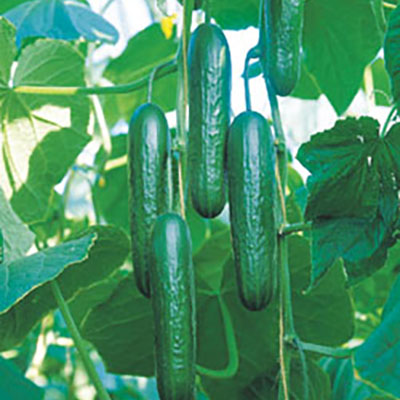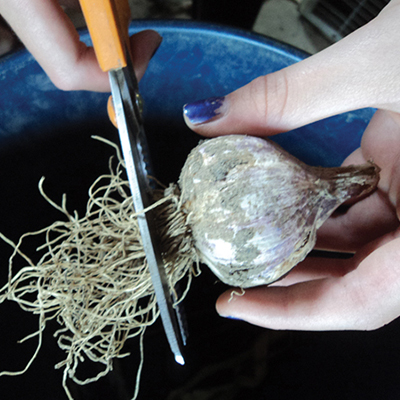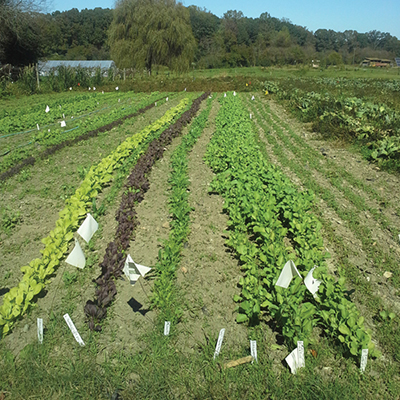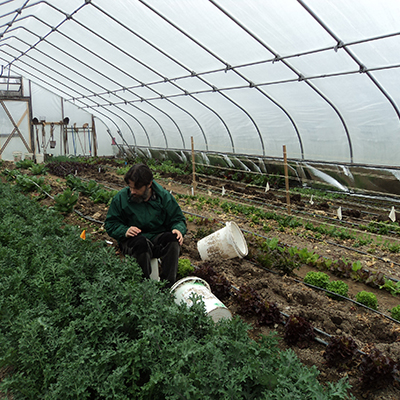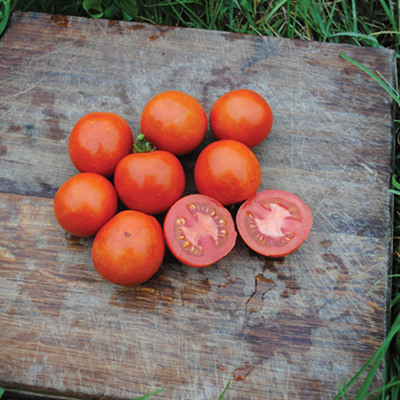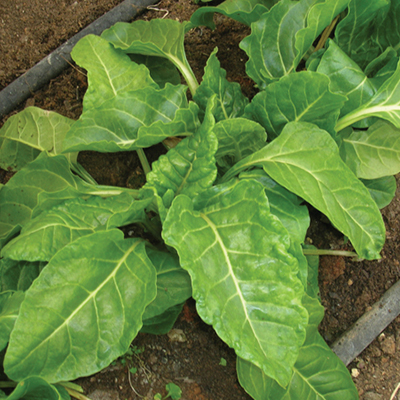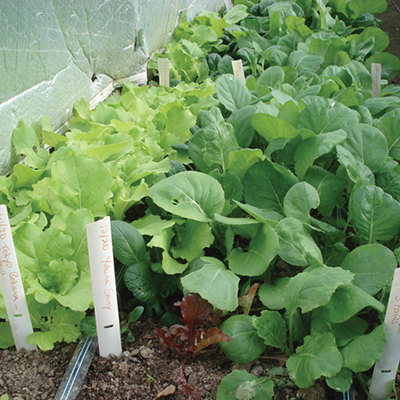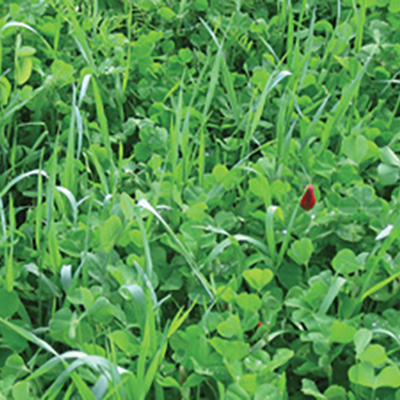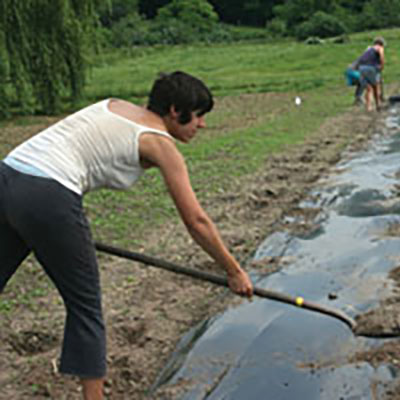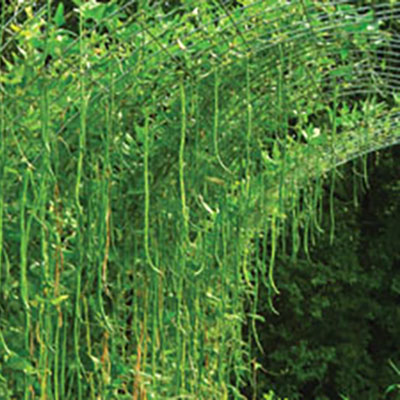By Pam Dawling Cucumbers are very easy to grow, apart from dealing with pests and diseases! My information files on cucumbers are 90% information about these challenges.
Cucumbers are very easy to grow, apart from dealing with pests and diseases! My information files on cucumbers are 90% information about these challenges.
Cucumber varieties
Cucumbers can be divided into two basic types in several ways:
• Slicers and picklers. Among slicers there are the standard American types (Open-pollinated Marketmore types and hybrids such as General Lee), European varieties such as Telegraph, (an OP originally developed for greenhouse production but suitable for growing outdoors) and middle-eastern and Asian ones, such as the 60 day varieties Poona Kheera, Suyo Long, and Yamato. The Asian varieties are useful if your market likes them, but they do not have the disease-resistance of varieties bred for US climates.
Pickling cucumbers are usually smaller than slicing cucumbers. Some kinds are harvested relatively large, and sliced or cubed to make pickles. Others are picked small and pickled whole. We like the small-leaved Little Leaf, also known as H-19 and Arkansas Little Leaf. We have lots of inexperienced helpers, and it’s good to be able to make a clear distinction: “if the plant has small leaves, it’s a pickler, so pick small.”
Both picklers and slicers are also available as bush and trailing varieties. For an early hoophouse crop, we grow Spacemaster (60 days, cmv and scab resistant), a bush-type, full-sized cucumber. County Fair pickler, and Marketmore 97 and Diva slicers are low in the bitter compounds that attract cucumber beetles, and cause burps.
Both slicing and pickling cucumbers are available in gynoecious (all female) varieties. These seeds come packaged with 10-15% of seeds of a pollinator variety, which are sometimes dyed so that growers can ensure they get sown evenly in the planting. General Lee, Olympian and Diva (bred by Johnnys Selected Seeds) are gynoecious. Non-gynoecious cucumber varieties produce only male flowers initially, and then as many as 20 male flowers to every female flower after that, making them much less productive than gynoecious varieties.
Parthenocarpic varieties set fruit without pollination. This is valuable for situations where you are extending the season or need to protect from pests with row cover, as parthenocarpic varieties can be kept covered for the life of the plant. They can be a good choice for hoophouses if pollinators are scarce. Little Leaf is parthenocarpic, as are Telegraph and Diva. Because they are all-female and un-pollinated, they are seedless, unless cross-pollinated by another variety.
Look for resistance to diseases you know to be a problem in your area. Poinsett 76 is an Open Pollinated (OP) variety resistant to Downy Mildew, Powdery Mildew, Anthracnose, Scab, Fusarium, Angular Leaf Spot, Spider Mites and Cucumber Mosaic Virus. For a main crop slicer we like the hybrid General Lee. Previously we grew Marketmore 76, a dependable 8" sweet cucumber that grows well in the mid-Atlantic as well as the North. We also have had success with Olympian. We choose Little Leaf pickler not only for ease of recognition but also because of its disease resistance. Another pickler with disease resistance is Edmonson.
Crop requirements
Cucurbits require a fertile, well-drained soil with pH 6-7 and plenty of sunshine. They have no frost tolerance. Adequate water is especially important in the seedling stage and during fruiting. Vines can sprawl and cover a 4’ bed, or fill even a 7’ row when grown on the flat. Close spacings will increase yields and provide a more uniform harvest — just what you want if you have a contract with a pickle company. Otherwise, for a longer harvest from each planting, do not crowd them.
Yield can be around 260 pounds per 100’, and the amount to grow could be 10-15 pounds per person for the season, so for 1,500 pounds, grow 577’ for 100 people.
Unless you are growing parthenocarpic varieties, you will need to ensure there are adequate pollinators around. It takes 10-20 bee visits per flower in the one day that flower is open for a good shaped and sized fruit to grow.
Sowing
Soil temperatures should be at least 60°F, preferably 70°F, so early in the year you might do transplants; see below. We transplant our first planting (sown 3/25, planted out 4/20) and direct sow the rest. Cucumber seeds will not germinate at a soil temperature below 50°F. They take 13 days to emerge at 59°F, 6.2 days at 68°F, 4 days at 77°F, and only 3 days at 86°F.
For sowing in open ground, we make a furrow 0.5-0.75” deep, water the furrow if the soil is dry, put one seed every 6”, pull the soil back over the seeds, and tamp down. Growers commonly space seeds at 2”), but using the wider spacing gives us no problems. We cover all our cucurbit sowings with row cover until the plants start to flower (about a month), as we have many pests and diseases. When the plants start to flower, we remove the row covers, hoe and thin to 12-18” (30-45cm). Some growers thin only to 4-12”. Rows need to be 3-6' apart.
If you want a faster harvest than you’d get from direct sowing, you can chit (pre-sprout) the seed. Put the seed on damp paper towels, roll them up and put the bundles in plastic bags loosely closed, or plastic sandwich boxes, not sealed. Keep at 70-85°F. Check twice a day (this also introduces fresh air to the seeds), and sow before the root reaches the length of the seed. Seeds which are already sprouting will not need more watering after sowing until the seedlings emerge unless the soil is dry as dust.
It is possible to sow cucurbits through plastic mulch by jabbing holes in the plastic and popping the seeds in. This method leads to earlier harvests, as the mulch warms the soil, and there will be no weeds.
Transplanting
Cucurbits are not very easily transplanted, so choose a method that minimizes root damage, such as soil blocks or 2” deep cell flats that are easy to eject plants from. Sow 2-3 seeds per cell 0.5” deep. Reduce to one plant per cell by cutting off weak seedlings at soil level. Keep temperature above 70°F during the day and 60°F at night. Cucurbit seedlings are sometimes damaged by foliar sprays, so avoid killing by mistaken kindness.
Sow 4 weeks before you intend to plant out, and harden the plants by reducing water before transplanting. “Days to maturity” in catalogs are usually from direct seeding, so subtract about 10 days to calculate from transplanting to harvest date.
Warm overcast conditions late in the day are best, and row cover, preferably on hoops to reduce abrasion, can be used to provide warmer and less breezy conditions. Cucurbit transplants are often leggy, and they should be planted so that all the stem up to the base of the leaves is below soil level, otherwise the fragile stem is liable to get broken.
Cultivation
In bare soil, hoe and thin soon after the seedlings emerge. Larger spacings can be used later in the year, when vines grow faster, than for the first spring planting. Some growers trellis and prune their cucumbers, especially in hoophouses, or if they are growing European cucumbers with long slim fruits and want to ensure straight fruits.
Plastic mulches can reduce cucumber beetle numbers, as they deter egg laying and larval migration. Reflective mulches especially reduce beetle populations. Plastic mulches work well with the use of row covers, as there will not be weeds growing out of sight concealed by the row cover during the critical weed-free period as the vines grow. Avoid working the crop (including harvesting) when the foliage is wet, as fungal diseases spread this way.
Rotations
Because of the many cucurbit pests and diseases, good crop rotation is important. In our main plantings, we have only two big cucurbit plantings, winter squash and watermelon. These are three years and seven years apart in our 10-year rotation. Cucumbers are planted in small quantities each planting, and we use a fairly ad hoc planning process, simply trying not to plant cucurbits anywhere they have been growing in the past two years. Longer would be better. Because old plants are more likely to yield bitter cucumbers, succession cropping is very worthwhile even if you have no pests.
Cucumber beetles are quite mobile, so rotation to a field next to last year’s crop will not reduce their numbers. To minimize their chances, always till in cucurbit crops residues at the first opportunity.
Succession planting
We grow 5 plantings of outdoor cucumbers and one early one in the hoophouse. Our second and fourth outdoor sowings include picklers as well as slicers. Our sowing dates are 2/21 (to plant in the hoophouse 4/1 or so), 3/25 (to plant outdoors 4/20), 5/24, 6/23, 7/15 and 8/5. 8/5 is about as late as it is worth sowing here, where the first frost can be 10/14. We use row cover on cold nights for this late crop. Last month I described recording sowing and first harvest dates for succession crops of beans. The same technique can be used for cucumbers to determine sowing dates to get an even supply throughout the season. As a rule of thumb, in spring, make another sowing when the first true leaf appears in the previous sowing. In summer, make the next sowing when you have 80% emergence of the previous planting. (You’ll have to keep peeking under the row cover.) This information comes from Dr. Mary Peet at North Carolina State University.
Insect pests
See below for links to several good publications. As always, encouraging beneficial insects and predators will reduce pest numbers. Soldier beetles (Pennsylvania Leatherwings) and Wolf Spiders are good predators. Heterohabditis nematodes, available commercially, can control cucumber beetles and may carry over into the next year.
Spotted and striped cucumber beetles cause feeding damage and transmit bacterial wilt and squash mosaic virus. Row cover will keep beetles from vines, but will need to be removed (except for parthenocarpic varieties) when the female flowers open. For picklers it is possible to grow a densely planted crop, harvest for a very brief period, then till in the vines. Some people report good control using the yellow plastic sticky traps along with the cucumber beetle lure sachets sold by Johnnys. These can last a whole season and be moved from one crop to the next, suspended on wire hoops. To make your own sticky traps, use yellow plastic cups stapled to sticks so the cups are just above foliage height. Coat the cups with 1 part petroleum jelly:1 part household detergent (if you are not prevented by USDA certification), or the insect glues available commercially. Cucumber beetles are attracted by clove and cinnamon oils, which can be used to lure them. Use one trap per 1000 sq. ft. Another approach is to grow a trap crop of a variety particularly attractive to the beetles, such as Cocozelle summer squash, Seneca or Dark Green zucchini, along the edge of the field. The trap crop is then flamed or tilled in when pest numbers build up. If all else fails and action is imperative, Spinosad will kill them. Neem doesn’t kill them, but does deter them.
Brown Marmorated Stink Bugs are a new pest of cucurbits spreading across the U.S. Click here for more information
Diseases
Choose disease-resistant varieties, provide favorable growing conditions, plow in or remove and compost plant refuse, and control insect pests. The Cornell publication referred to below has information on dealing organically with most common diseases:
Angular Leaf Spot (bacterial) occurs during cool, wet weather. Symptoms include interveinal browning of the leaf and small round spots on the fruit. The leaf damage is tan, rather than dark.
Anthracnose, a fungus disease, is most common during warm rainy weather. It causes angular haloed dark-brown spots on the leaves and dark round sunken spots on the fruit.
Bacterial Wilt (Erwinia) causes sudden dramatic wilting and death of the vines.
Black Rot/Gummy Stem Blight (Didymella bryoniae) is a fungus occurring with wet soils, cool or warm wet weather. It is less of a problem in cucumbers than in other cucurbits.
Downy Mildew occurs during wet, cool spells and plants may recover if the weather heats up
Mosaic Virus causes a yellow and green mottling of the leaves and reduces plant vigor.
Phytophthora Blight occurs in some regions but not others.
Powdery Mildew occurs during hot, dry spells
Harvest
Growers with large plantings use machines to harvest from their concentrated plantings of 60,000 plants/acre. The rest of us pick by hand. Once the season is up and running, we need to pick every day to prevent the creation of blimps. Some people find the scratchy leaves very irritating, and like to wear shirts with long sleeves and gloves.
To harvest, put the hand around the fruit and use the thumb to push the stem away from the top of the fruit. Our instructions to the crew are to harvest the picklers at the size of their little finger, or bigger. Pick the over-size ones and drop them on the ground. No need to carry those useless things out of the field. For slicers we tell people to picture the cross-section of the fruit and let it round out into a circle with slight corners (not a balloon!). We try to avoid harvesting under-developed triangular cucumbers.
Cucumbers do not need to be rushed to the cooler as greens and sweet corn do, so they can be picked and set in the shade until a full load of produce is ready to be moved.
Storage
Cucumbers can be held at 45-50°F and 90% humidity for up to 2 weeks. They will be damaged by temperatures too cold, becoming soft and slimy. Storage near other ripening fruits or vegetables can cause the cucumbers to become bitter.
Season extension
Late crops can be covered with row cover to fend off a few frosts. Pollinators won’t be able to get at the flowers, but that doesn’t matter if you already have enough fruits on the plants. You can even pinch off immature fruits to concentrate the plants’ energy into ripening the bigger fruits. It takes about 45 days or more from pollination to harvest, so if you are having a few early frosts, using row cover and pruning to get a last flush of fruit can be very worthwhile. It isn’t worth it to coddle every last little nubbin of a fruit, once you are into your usual frost time of year.
Early crops can be grown in a hoophouse, using transplants, with row cover added on cold nights.
Seed saving
Cucumber varieties need to be isolated by 0.125 mile, or 660’ for home use, and a minimum of 0.25-1 mile for seed for sale.
Pam Dawling is the garden manager at Twin Oaks Farm in Louisa, Virginia. The gardens provide 100 residents with nearly all their fresh and processed produce. She can be reached at [email protected].


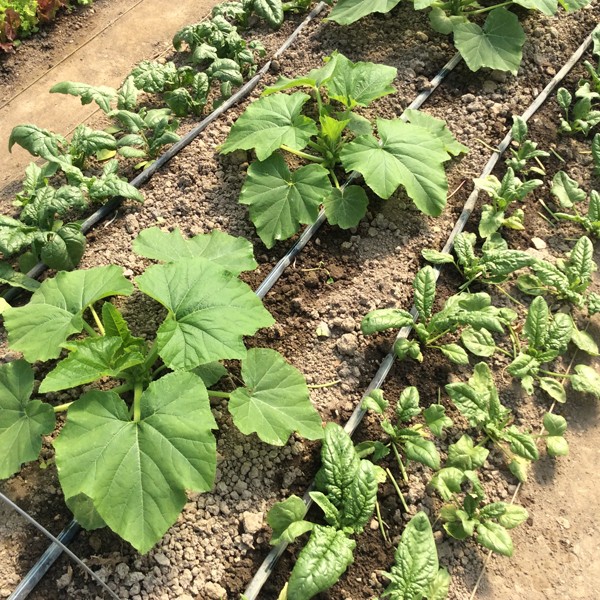 We have three main seasons in our zone 7 central Virginia hoophouse: fall-winter (October to March), spring-early summer (March to July) and high summer (August and September). We grow one bed (90’/27.5 m or so) each of yellow squash and bush cucumbers in the spring-summer season, for reliable early harvests and to help with crop rotation. If you farm in a colder climate than ours, you might be questioning allocating the precious real estate to a crop that so quickly goes from desirable to over-abundant, especially when there are more profitable things to give the space to. One reason is a difference between southern and northern climates.
We have three main seasons in our zone 7 central Virginia hoophouse: fall-winter (October to March), spring-early summer (March to July) and high summer (August and September). We grow one bed (90’/27.5 m or so) each of yellow squash and bush cucumbers in the spring-summer season, for reliable early harvests and to help with crop rotation. If you farm in a colder climate than ours, you might be questioning allocating the precious real estate to a crop that so quickly goes from desirable to over-abundant, especially when there are more profitable things to give the space to. One reason is a difference between southern and northern climates.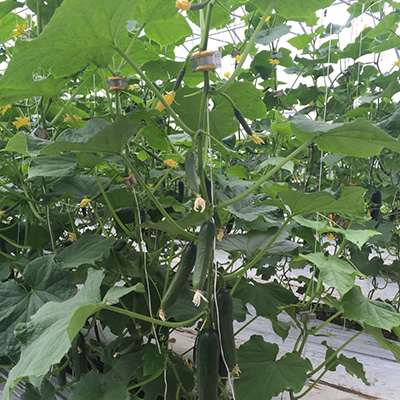
 Recently someone posted a question about choosing cucumber varieties to the Growing for Market Facebook page. Here's the question, with my answer to follow:
Recently someone posted a question about choosing cucumber varieties to the Growing for Market Facebook page. Here's the question, with my answer to follow: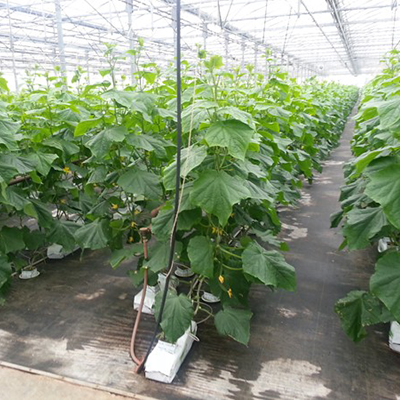
 I’ve often wondered why more market growers don’t use umbrella pruning for greenhouse and hoophouse cucumbers. It’s probably the most common way of growing cukes in greenhouses, and translates well to hoophouses and smaller structures with trellising in the 6-7’ range. I’m pretty sure the reason it’s not used more is unfamiliarity, since most smaller growers I’ve talked with don’t know about it. It’s called umbrella style because the main stem is grown up a string (the umbrella handle), topped at the wire, and two suckers are allowed to grow out to each side (the umbrella canopy).
I’ve often wondered why more market growers don’t use umbrella pruning for greenhouse and hoophouse cucumbers. It’s probably the most common way of growing cukes in greenhouses, and translates well to hoophouses and smaller structures with trellising in the 6-7’ range. I’m pretty sure the reason it’s not used more is unfamiliarity, since most smaller growers I’ve talked with don’t know about it. It’s called umbrella style because the main stem is grown up a string (the umbrella handle), topped at the wire, and two suckers are allowed to grow out to each side (the umbrella canopy).